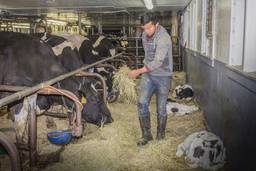Food Poisoning for Thought
Food regulators in both China and the United States have a financial or career stake in the profitability of the industries they are supposed to oversee
Terry J. Allen
If a country executes people who murder close-up with guns or knives, it should also put to death officials and executives who kill at a polite distance by knowingly approving and selling lethal products.
For all its faults as the world’s high-executioner state, China picked an equal-opportunity victim in Zheng Xiaoyu, former head of the State Food and Drug Administration. Lamentably, he was convicted of corruption, not murder. He took bribes to approve licenses for foods and drugs that killed consumers, including babies.
When the greed and corruption of U.S. corporate and government leaders kill, we rarely punish those responsible, and never with the severity meted out to “real” criminals.
While recent headlines about China spotlight deadly pet food, toxic toothpaste and contaminated fish, U.S. supermarkets feature domestic chicken teeming with salmonella, and poisonous spinach and peanut butter, along side foods rich in antibiotics, hormones and pesticides.
One U.S. firm added melamine, the plastic that Chinese manufacturers used to adulterate pet food ingredients. When Colorado-based Uniscope tested the resin it buys to bind its fish, shrimp and livestock feed pellets, it found melamine and reported it. The Food and Drug Administration (FDA) responded with a “voluntary recall,” also noting that both the resin supplier, Ohio-based Tembec, and Uniscope were using urea formaldehyde, a suspected carcinogen. The FDA promised “action if warranted.”
Illnesses from slow-acting carcinogens, toxins and residual drugs aside, 76 million Americans contract a food-borne illness each year, 325,000 require hospitalization and 5,000 die, according to the Centers for Disease Control. In China, where “mass food poisonings involving tainted food products are common,” according to the New York Times, the toll is higher.
The similarities between China and the United States extend to matching sets of revolving doors. The condemned Zheng rose to head the regulatory agency after two decades at state-run drug companies.
Former U.S. Department of Agriculture (USDA) Secretary Ann Veneman was once a director of the biotech company Calgene (eaten by Monsanto which was swallowed by Pharmacia). Her predecessor Dan Glickman’s door swung the other way. After heading USDA, he took a lucrative job at a major D.C. lobbying and law firm that advises clients he previously regulated.
Conflict of interest also shares a cross-cultural bond. Many Chinese officials have a financial or career stake in the profitability of the state-run industries they oversee.
In the United States, campaign contributions and financial investments make for more subtle corruption, but both the USDA and the FDA, its weak and chronically underfunded partner, are in thrall to industry interests. After Lester Crawford resigned as FDA head in 2005, he pleaded guilty to lying and conflict-of-interest charges over stock he and his wife owned in companies his FDA regulated.
The USDA has a built-in conflict of interest the size of a silo: Its legal mandate includes the often-clashing goals of promoting the meat industry and protecting the public. While it has a bigger budget and more enforcement clout than the FDA, it lacks any authority to regulate the farms where meat and poultry hazards begin.
Both Chinese and American consumers are sick and sick of it. “We used to love buying home-made honey from the peasants in villages outside of Beijing, but now we are scared,” Feng Xiaohua, a weekend mountaineer, told InterPress Service. “We are probably wrong though, because it is the corrupt officials we have to fear and not the poor peasants.”
Vermont recently came down on the side of the “peasants,” becoming the first state to allow uninspected chickens raised on small farms to be served in restaurants. Given a choice between an uninspected, home-raised hen and a USDA-approved factory chicken, Vermonters are happy to bet the farm on the nearby farmer.
Domestic food and drug safety is supposed to be protected by 15 federal agencies, with the herniated FDA and the USDA doing the heavy lifting. The FDA oversees 80 percent of U.S. food; the USDA regulates meat and poultry.
Sounds simple? Consider your lunch: The FDA has jurisdiction over your cheese pizza, but add pepperoni and the USDA rules. In cases of dangerous food contamination, except for baby formula, neither agency has the power to order a recall. Instead they rely on the cooperation of companies, which often stroll through their records and issue recalls long after the food is consumed. With the pet food scandal, months passed between contamination and recall. What’s more, consumers were astonished to discover that rather than being destroyed, some of the melamine-contaminated chow entered the human food chain – fed to dinner-table bound pigs, chickens and farmed fish.
As for advocating the death penalty rather than stiff jail sentences for government and corporate officials who are knowingly push deadly food and drugs, I was kidding. They’d probably end up in the food supply.
SPECIAL DEAL: Subscribe to our award-winning print magazine, a publication Bernie Sanders calls "unapologetically on the side of social and economic justice," for just $1 an issue! That means you'll get 10 issues a year for $9.95.








